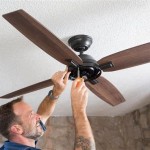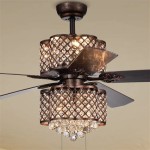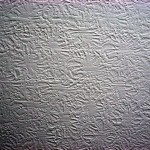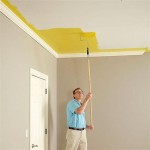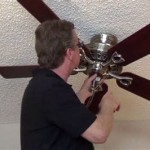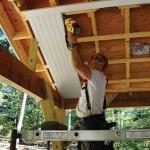Awesome Ceiling Fans To Keep You Cool In Summer And Winter
Ceiling fans represent a multifaceted solution for maintaining comfortable temperatures within a living space throughout the year. They contribute to energy efficiency by supplementing or even reducing reliance on air conditioning and heating systems. Beyond basic functionality, modern ceiling fans have evolved in design and technology, offering a range of features and aesthetics to complement diverse interior styles. Understanding the mechanics, types, and benefits of ceiling fans allows consumers to make informed decisions when selecting the ideal model for their needs.
The fundamental principle behind a ceiling fan’s cooling effect is based on air circulation. The rotating blades create a gentle breeze that evaporates moisture from the skin, producing a cooling sensation. This effect is particularly noticeable in humid environments, where the fan's ability to move air accelerates the evaporation process. In winter, the same principle applies, albeit with a different objective. By reversing the direction of the fan blades, warm air that naturally rises to the ceiling can be pushed back down into the occupied space. This process helps distribute heat more evenly and reduces the workload on the heating system.
The versatility of ceiling fans makes them attractive for year-round use. They are not merely seasonal appliances but tools for optimizing thermal comfort and reducing energy consumption. Selecting the correct size, style, and features is essential to maximize the benefits and ensure the fan operates efficiently and effectively within the intended space.
Understanding Ceiling Fan Mechanics
The core components of a ceiling fan include the motor, blades, blade brackets, and a housing or canopy that conceals the wiring and mounting hardware. The motor is the driving force, converting electrical energy into mechanical energy to rotate the blades. Motors are typically classified as either AC (Alternating Current) or DC (Direct Current). AC motors are generally more affordable but can be less energy-efficient and produce more noise than DC motors. DC motors are known for their quiet operation, energy efficiency, and often offer more speed settings.
Blade pitch, which is the angle of the blades relative to the horizontal plane, significantly affects the fan's airflow. A steeper blade pitch generally moves more air but may also require more energy to operate. The number of blades also influences airflow, with fans featuring more blades often producing a gentler, more diffused breeze, while fans with fewer blades can generate a stronger, more direct airflow. The material and shape of the blades are also important considerations, as they impact the fan’s efficiency and performance. Common blade materials include wood, metal, and plastic, each offering different aesthetic and functional properties.
The size of the fan is crucial for optimal performance within a specific room size. A general guideline suggests that smaller rooms (up to 75 square feet) may benefit from fans with blade spans of 36 inches or less. Medium-sized rooms (up to 225 square feet) typically require fans with blade spans between 42 and 48 inches, while larger rooms (up to 400 square feet) may need fans with blade spans of 52 inches or greater. For very large spaces, multiple fans may be necessary to provide adequate air circulation.
Exploring Different Types of Ceiling Fans
Ceiling fans are available in a diverse range of styles and configurations, catering to various aesthetic preferences and functional requirements. Standard ceiling fans are the most common type, featuring a motor housing suspended from the ceiling with blades attached to it. These fans are typically straightforward in design and offer a balance of performance and affordability. Low-profile ceiling fans, also known as hugger fans, are designed for rooms with low ceilings. They mount flush or nearly flush against the ceiling, minimizing the overall height and preventing the blades from being too close to the floor.
Dual-motor ceiling fans feature two separate motors, allowing for independent control of the blades and the light fixture. This configuration offers enhanced flexibility and customization. Outdoor ceiling fans are specifically designed for use in covered outdoor spaces, such as patios and porches. They are constructed with weather-resistant materials to withstand moisture, humidity, and other environmental factors. Remote-controlled ceiling fans offer convenient operation from anywhere in the room. These fans typically include features such as speed control, light dimming, and timer settings, all accessible via a handheld remote.
Smart ceiling fans incorporate advanced technology, allowing users to control the fan through a smartphone app or voice commands. These fans may also include features such as automated speed adjustments based on room temperature or occupancy sensors that turn the fan on or off automatically. Selecting the appropriate type of ceiling fan depends on several factors, including ceiling height, room size, aesthetic preferences, and desired features. Careful consideration of these factors will ensure the selected fan meets the specific needs of the space.
Benefits of Using Ceiling Fans in Summer and Winter
The primary benefit of using ceiling fans in summer is the cooling effect created by air circulation. By moving air across the skin, the fan accelerates the evaporation of sweat, which helps to lower body temperature. This cooling effect can make a room feel several degrees cooler than the actual temperature, potentially reducing the need for air conditioning and saving energy. In winter, reversing the direction of the fan blades helps to redistribute warm air that rises to the ceiling. This process reduces temperature stratification, ensuring that the air near the floor is warmer and more comfortable. By circulating the warm air, the fan can reduce the workload on the heating system and lower energy costs.
Beyond temperature regulation, ceiling fans offer several other advantages. They can improve air quality by circulating air and reducing stagnant areas where pollutants and allergens may accumulate. Some ceiling fans also include air purifying features, such as HEPA filters, which can further enhance air quality. Ceiling fans can also add aesthetic value to a room. With a wide range of styles, finishes, and blade designs available, ceiling fans can complement any interior decor. They can serve as a focal point or blend seamlessly into the background, depending on the design and placement.
Furthermore, modern ceiling fans are increasingly energy-efficient. DC motor models use significantly less electricity than traditional AC motor models, resulting in lower energy bills and a reduced carbon footprint. ENERGY STAR-certified ceiling fans meet strict energy efficiency guidelines, ensuring optimal performance and minimal energy consumption. By using ceiling fans strategically in both summer and winter, homeowners can create a more comfortable and energy-efficient living environment.
Installation of a ceiling fan typically involves mounting the fan to a junction box in the ceiling and connecting the electrical wiring. It is essential to ensure that the junction box is properly rated to support the weight of the fan. If the existing junction box is not suitable, it may need to be replaced with a heavier-duty box. Wiring the fan correctly is crucial to ensure safe and reliable operation. It is recommended to consult a qualified electrician if you are not comfortable performing electrical work. Once the fan is installed, it is important to test it to ensure that it is operating correctly and that the blades are balanced. An unbalanced fan can cause wobbling and noise, which can be annoying and potentially damage the fan or the ceiling. Balancing kits are available to correct any imbalances and ensure smooth, quiet operation.
Maintaining a ceiling fan is relatively straightforward. Regular cleaning is essential to prevent dust and dirt from accumulating on the blades and motor housing. A damp cloth or a vacuum cleaner with a brush attachment can be used to clean the blades. It is also important to periodically check the screws and connections to ensure that they are tight. Loose screws can cause the fan to wobble or make noise. Lubricating the motor bearings can also help to extend the life of the fan and ensure smooth operation. Follow the manufacturer's instructions for lubrication, as different models may require different types of lubricant.
When selecting a ceiling fan, consider the size of the room, the ceiling height, the desired style, and the energy efficiency rating. Choose a fan with a blade span that is appropriate for the room size, and ensure that there is adequate clearance between the blades and the floor. Low-profile fans are ideal for rooms with low ceilings. Select a style that complements the existing decor and consider features such as remote control, light dimming, and smart home integration. Look for ENERGY STAR-certified models to maximize energy savings. By carefully considering these factors, you can choose a ceiling fan that meets your needs and provides years of comfortable, energy-efficient performance.
The 5 Best Ceiling Fans Of 2025 Rewiews
The 5 Best Ceiling Fans Of 2025 Rewiews
Install A Ceiling Fan To Keep You Cool

What Is The Right Ceiling Fan Direction For Summer And Winter Pro Tool Reviews

How To For A Ceiling Fan Reviews By Wirecutter
Ceiling Fan Direction In Winter And Summer

Ceiling Fan Direction In Winter Vs Summer Taskrabbit Blog

Summer Winter Mode Fans Why Direction Makes A Difference Martec

Which Way Should Fan Spin In Summer Or Winter Hunter

Best Ceiling Fans For Your Home The Depot
Related Posts

